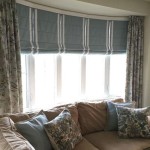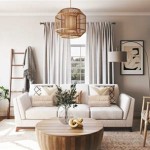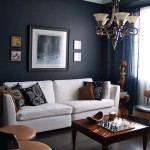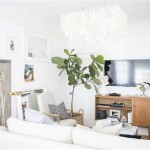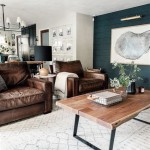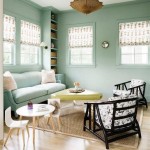Kitchen Living Room Colour Schemes: Creating Harmonious and Functional Spaces
The integration of the kitchen and living room into a single, open-plan space has become a dominant trend in modern home design. This configuration fosters sociability, maximizes space utilization, and enhances natural light distribution. However, successfully blending these two distinct areas requires careful consideration of colour schemes to ensure visual harmony and a cohesive overall aesthetic. Selecting appropriate colour palettes is crucial for defining zones within the open-plan space, creating a sense of flow, and reflecting the desired mood and style.
Colour psychology plays a significant role in determining the atmosphere of a room. Warm colours, such as reds, oranges, and yellows, tend to evoke feelings of energy and excitement, making them suitable for high-activity areas like the kitchen. Cool colours, including blues, greens, and purples, are generally associated with calmness and relaxation, making them ideal for living rooms. Neutral colours, such as whites, greys, and beiges, provide a versatile backdrop that can be easily adapted to various styles and preferences. The application of these principles, along with an understanding of specific colour properties such as saturation and value, is essential for creating a balanced and visually appealing kitchen living room.
Furthermore, the existing architectural features, natural light conditions, and personal preferences must be taken into account when choosing colour schemes. Dark colours, for example, can make a small room feel even smaller, while light colours can create an illusion of spaciousness. Similarly, rooms with abundant natural light can accommodate a wider range of colours, while those with limited natural light may benefit from lighter, more reflective shades. Ultimately, the goal is to create a unified design that seamlessly integrates the two spaces while reflecting the homeowner's individual style and needs.
Establishing Visual Zones Through Colour
One of the primary challenges in designing a kitchen living room is defining distinct zones without visually separating the space completely. Colour can be a powerful tool for achieving this balance. A common approach is to use contrasting colours to delineate the kitchen area from the living room area. For instance, a kitchen with cabinetry in a darker shade of grey or blue can be paired with a living room featuring lighter walls and furniture in complementary neutral tones.
Conversely, a monochromatic colour scheme, using different shades and tints of the same colour, can create a sense of continuity and flow between the two areas. This approach is particularly effective in smaller spaces where a more unified look is desired. For example, walls painted in a light beige can be complemented by kitchen cabinets in a slightly darker shade of beige and living room furniture in various beige textures and patterns. Accents in a contrasting colour, such as a vibrant orange or teal, can be incorporated to add visual interest and prevent the space from feeling monotonous.
Another strategy involves using a focal wall in either the kitchen or living room to establish a visual anchor. A bold colour or patterned wallpaper on one wall can draw the eye and create a sense of depth. This focal point can then be complemented by more subtle colours in the surrounding areas. For example, a kitchen island painted in a striking colour can serve as a focal point, with the surrounding cabinetry and walls in neutral tones. In the living room, a feature wall behind the sofa can be painted in a contrasting colour to add visual interest.
The interplay of colour on furniture and accessories also plays a crucial role in defining zones. Using cushions, rugs, and artwork in complementary colours can help to connect the two spaces while still maintaining a sense of individual identity for each area. For example, if the kitchen features blue accents, incorporating blue cushions and artwork in the living room can create a visual link between the two spaces. The key is to use colour strategically to guide the eye and create a sense of balance and harmony throughout the open-plan area.
Harmonizing Colour Palettes with Interior Styles
The choice of colour schemes should also align with the overall interior style of the home. Different styles lend themselves to different colour palettes. A modern, minimalist style often benefits from a neutral colour scheme with clean lines and minimal embellishments. White, grey, and black are common choices, often accented with pops of colour in artwork or accessories.
In contrast, a traditional style may embrace warmer, richer colours such as creams, browns, and greens. These colours can be combined with patterned fabrics and ornate details to create a comfortable and inviting atmosphere. A farmhouse style often features a combination of neutral colours with rustic accents. Whites, creams, and greys are frequently used as a base, with natural wood tones and pops of colour in muted shades of blue, green, or yellow.
A bohemian style, on the other hand, allows for a more eclectic and colourful approach. Bright, saturated colours such as oranges, pinks, and purples can be combined with patterned textiles and global-inspired accessories to create a vibrant and personalized space. An industrial style often features a palette of greys, blacks, and browns, with exposed brick, concrete, and metal accents.
Regardless of the chosen style, it is important to maintain a consistent colour palette throughout the kitchen living room to create a cohesive look. This does not necessarily mean that the colours must be identical, but rather that they should complement each other and create a sense of visual harmony. Consider using a colour wheel to identify complementary colours and create balanced colour schemes. The key is to create a unified design that reflects the chosen style while still providing a functional and comfortable living space.
Practical Considerations: Lighting and Material Finishes
Beyond aesthetics, practical considerations such as lighting and material finishes also influence the selection of colour schemes. Natural light plays a significant role in how colours appear in a room. A room with abundant natural light can accommodate a wider range of colours, including darker shades, without feeling oppressive. However, in rooms with limited natural light, it is best to opt for lighter, more reflective colours to maximize brightness and create a sense of spaciousness.
Artificial lighting also affects colour perception. Warm lighting tends to enhance warm colours, while cool lighting can make cool colours appear more vibrant. Consider the type of lighting fixtures and bulbs used in the kitchen and living room when choosing colours. It may be necessary to adjust the colour scheme based on the lighting conditions to achieve the desired effect.
Material finishes also play a crucial role in the overall aesthetic of the kitchen living room. For example, glossy finishes tend to reflect more light, making colours appear brighter and more vibrant. Matte finishes, on the other hand, absorb light, creating a softer and more muted effect. The choice of material finishes for cabinets, countertops, flooring, and walls should complement the chosen colour scheme.
For instance, a kitchen with glossy white cabinets and a light-coloured countertop will create a bright and airy feel. In contrast, a kitchen with matte dark wood cabinets and a dark-coloured countertop will create a more dramatic and sophisticated look. Consider the texture and pattern of materials as well. Rough, textured materials tend to absorb more light, while smooth, patterned materials can add visual interest and depth. By carefully considering the interplay of lighting, material finishes, and colour schemes, it is possible to create a kitchen living room that is both visually appealing and functional.

How To Decorate An Open Plan Kitchen Living Room Dulux

How To Decorate An Open Plan Kitchen Living Room Dulux

Choosing A Palette For An Open Floor Plan Colorfully Behr

20 Free Home Painting Living Room And Images

37 Kitchen Paint Ideas That Will Revitalize Your Space

Choosing A Palette For An Open Floor Plan Colorfully Behr

How To Choose A Palette For An Open Floor Plan

Choosing Paint Colors That Flow From Room To

Open Concept Kitchen And Living Room 55 Designs Ideas Interiorzine

The Best Colour Ideas For An Open Plan Living Space
See Also

